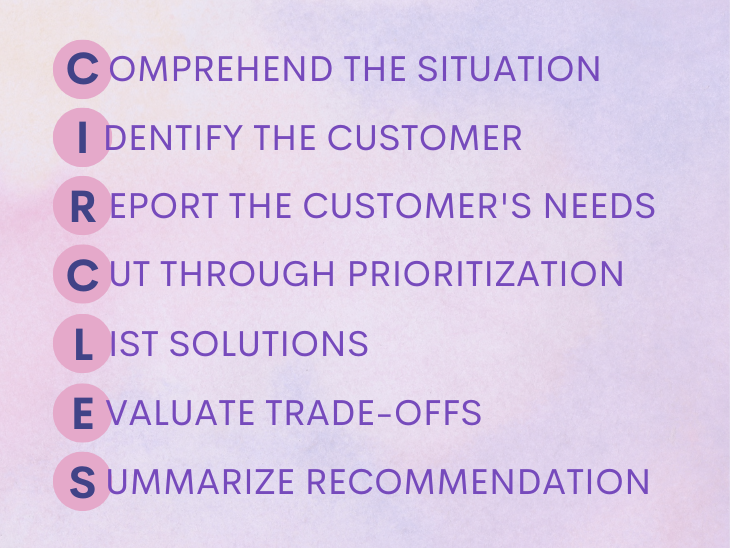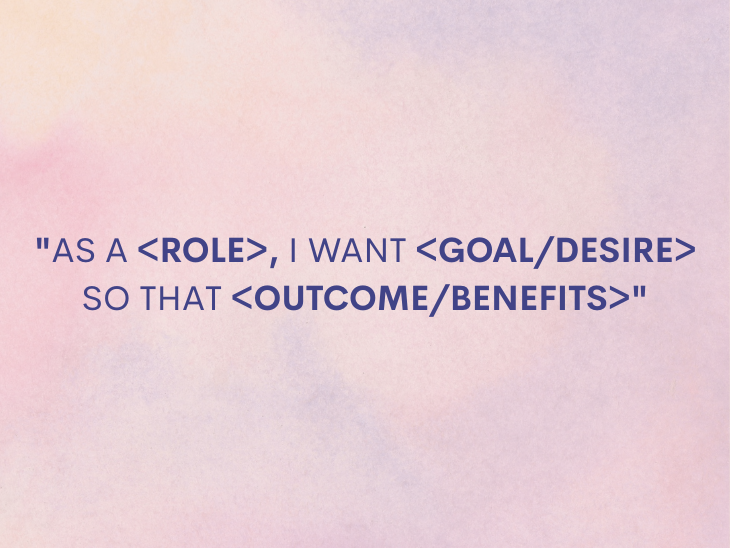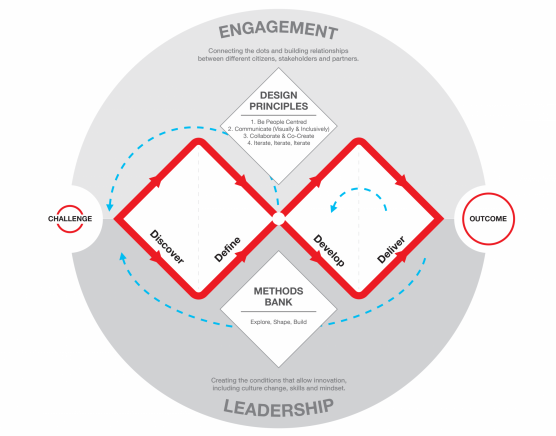
A product manager’s responsibility is to identify the needs of their product’s users while also creating and improving the features that meets those needs. In doing so, PMs may sometimes rush straight to the solutions without fully understanding the problems these solutions will resolve. This can sometimes lead to needs that are half-met or solutions that are only partially solved.
Lewis C. Lin, an author and entrepreneur, created the CIRCLES method framework as a guideline to give complete and thoughtful responses to any design question. It is a good way to slow down the process and save PMs from jumping straight to the solution.
The product design questions are some of the most challenging to answer in a product management interview processes. The CIRCLES method provides a structure to solve these design questions accurately and ace your next PM interview.
CIRCLES is an acronym that describes seven steps to solve a design problem. These linear steps are:

Let’s deep dive into each of these stages.
This is the first step towards solving the design problem. The CIRCLES method suggests you should clarify as much information as possible.
You can ask the basic who, what, where, why and how questions. This allows you to comprehend the situation and grasp the context before moving further.
For example, you can ask:
If the interviewer can’t clarify these questions, you should make assumptions based on what you know and convey those assumptions to the interviewer. This allows the interviewer to correct your assumptions if they think differently.
The CIRCLES method guidelines focus on a single customer segment during the interview that lets you propose an amazing product. During the interview, the interviewer might not be able to connect with the segment you have established. Hence, a 2X2 matrix is a powerful way to visualize your persona that lists the archetypes’ behavior, demography, needs, goals, and frustration.
In this third step, the candidate describes the customer’s need, user requirements, or use cases. Typically it is presented in a popular format called user story to capture the user needs.
It typically follows this format:
“As a [ROLE], I want [GOAL/DESIRE] so that [OUTCOME/BENEFITS].”

The point to remember is that the user story doesn’t describe how the solution works. Nevertheless, it is popular because user stories are concise, casual, and succinct.
Step four of the CIRCLES method is to cut through prioritization. This is simply the backlog item that a PM prioritizes based on value, time, and effort. Especially during interviews when a candidate doesn’t have enough time to walk through multiple user cases, picking one helps narrow down the choices and showcase the ability to prioritize and make decisions.
The prioritization criteria can be subjective, unlike real-time situations with a more quantitative approach. The prioritization matrix is a better way to articulate, and think through all the criteria. Typically, a candidate can use the matrix to decide on what is important, and each criterion is weighed over the other.
Once the prioritization happens, it boils down to brainstorming the solutions. Here a PM comes up with as many ideas as possible, and can narrow them down at the next stage based on the feasibility, customer, and revenue criteria.
This is the stage where one gets the opportunity to raise creative solutions, and showcase the ability of lateral and innovative thinking. Besides, there are no perfect solutions, and this approach helps to complete this stage while taking care of other underlying facts.
This stage is critical because the PM critiques their solution based on the trade-offs and risks. Unless the trade-off is unbiased, an impressive solution might come up. Finding the right solution also depends on all listed solutions’ short- and long-term pros and cons.
It is the final step when a PM candidate summarizes the final recommendation. The interviewer might expect the summary to be clear, concise, and eager to hear why the recommended product or feature benefits the user and cite reasons for preferring the solutions over others. The candidate will only do this stage if the interviewer asks for it; hence, it is optional. The trade-off steps already highlight the pros and cons of one solution over another.
Product managers need to keep the focus on the persona for which they are trying to solve problems. Besides, it is also important for them to communicate “why” they are building it. The CIRCLES method helps PMs prioritize features, feedback, experiments, and overall roadmap.
Secondly, the framework also allows PMs to ask the right questions during discovery to understand the actual pain points of the customers before jumping on the solutions. This overall approach helps PMs use lateral thinking rather than linear thinking while solving a problem.
Lateral thinking is an innovative way of building a product, whereas linear thinking is sequential and often jumps on the solutions quickly.
The purpose of the CIRCLES framework is a great way to refrain oneself not to dive into the solution mode. However, explicitly using the CIRCLES method framework is not always necessary during interviews. There are other frameworks too that can be used as substitutes for the CIRCLES method.
Some of the more popular alternative methods are:
These methods, too, deal with defining the problem, prioritizing the problems, recommending solutions, picking the most coveted solutions (desirable, available, and feasible), and prototyping. All these substitutes embrace the concept of solving design problems without having a solution in mind. Let’s know about these alternative methods in detail.
The Double Diamond model is a popular framework developed by the British design council in 2005 based on converging and diverging thinking patterns. This framework is popularly used to solve and explore various problems and solutions before converging upon one.
The outcomes of this Double diamond are four stages:
Again, it is a non-linear thinking process that starts from the divergent thought process to explore the problems and root causes, which converge to define the problem. Further, the divergence approach is applied during the development stage to find the MVP by prioritizing high-value and low-effort solutions. Later, the solution is delivered and improved based on the feedback.
The Double Diamond approach is preferable in the workshop mode by designers as it is facilitator focused. In contrast, the CIRCLES method is best applied when attempting a design problem in an interview.
Double Diamond solves a design problem through detail prototyping, testing, validating the solution, and time-consuming process.

The Lean Circle is just a reduced version of the regular CIRCLES method. It reduces the seven stages to three simple stages:
It is especially used for innovative thinking and to avoid falling into the trap of linear thinking. A candidate should understand that it is not a hard and fast rule to follow the CIRCLES framework step by step during situations when time is a constraint. It shows the ability to communicate succinctly while demonstrating lateral thinking to avoid a one-size-fits-all approach.
In Decode and Conquer, Lewis C. Lin specifically mentioned that he developed the CIRCLES method to answer any design questions during product interviews. However, other than interviews, it can also be used in real-life situations and as an interim solution.
Some of the benefits of the CIRCLES framework are that it:
PM can use the CIRCLES method to brainstorm an idea to solve a new feature problem. It also helps PMs communicate clearly and succinctly with the team on a new idea.
When budget and effort are hindrances to facilitating design sprints or Double Diamond workshops, a CIRCLES method can identify the best solutions the design team can work further to validate and test with users.
Of course, it is the best approach to quickly solve easy, complex, or unknown product design problems during product manager interviews. This framework provides the opportunity to clarify questions from the interviewer and then navigate through them.
Additionally, the CIRCLES method allows for structuring the answer and impresses the interviewer from beginning to end.
The major drawback to the CIRCLES framework is that it is based on a few clarifying questions. The list of solutions comes up based on those clarifying questions, assumption of personas, and may be biased in prioritization.
Therefore, in practical situations, designers and PMs prefer using design-specific tools, like the Double Diamond.
Another fundamental issue with this method is that it narrows the scope of testing and validating the solution using actual prototypes. Instead, the solutions are evaluated based on the trade-offs of pre-conceived criteria, including customer experience, feasibility, and revenue.
Featured image source: IconScout

LogRocket identifies friction points in the user experience so you can make informed decisions about product and design changes that must happen to hit your goals.
With LogRocket, you can understand the scope of the issues affecting your product and prioritize the changes that need to be made. LogRocket simplifies workflows by allowing Engineering, Product, UX, and Design teams to work from the same data as you, eliminating any confusion about what needs to be done.
Get your teams on the same page — try LogRocket today.

A practical framework for PMs to use AI in ideation without sacrificing judgment, strategy, or decision quality.

A practical five minute revenue estimation method to help product managers compare ideas, drop low impact features, and prioritize smarter.

A practical guide for PMs who want to stop being bottlenecks, delegate smarter, and lead teams effectively with a clear ownership framework.

Stop letting unreliable data block features. Treat data as inventory to track quality, ownership, and ship with confidence.